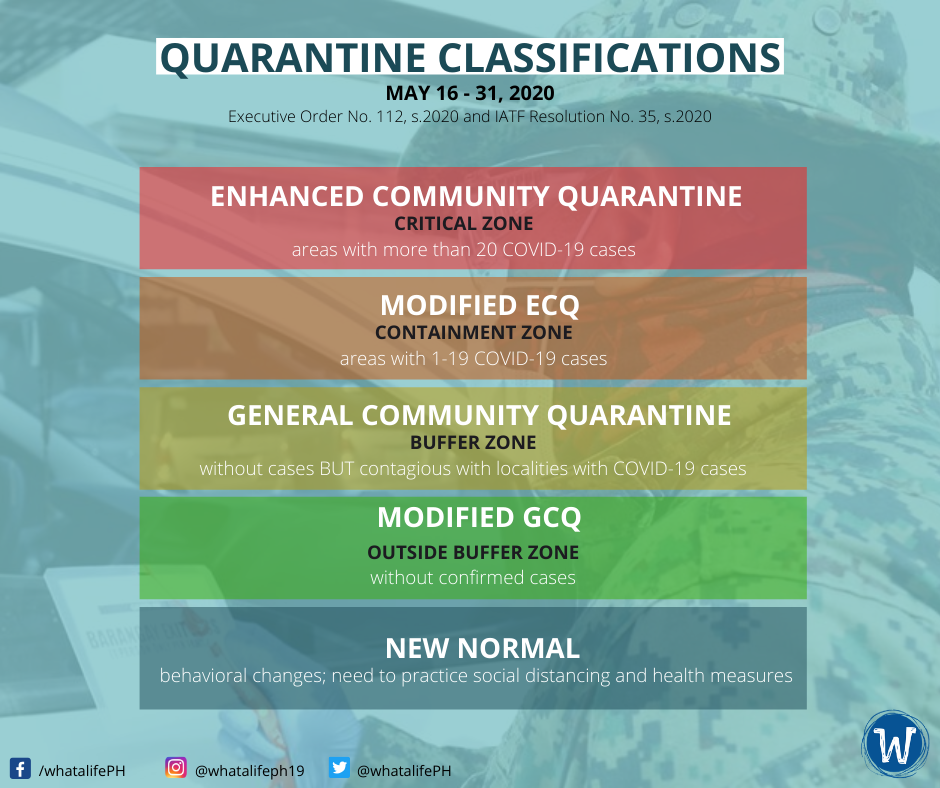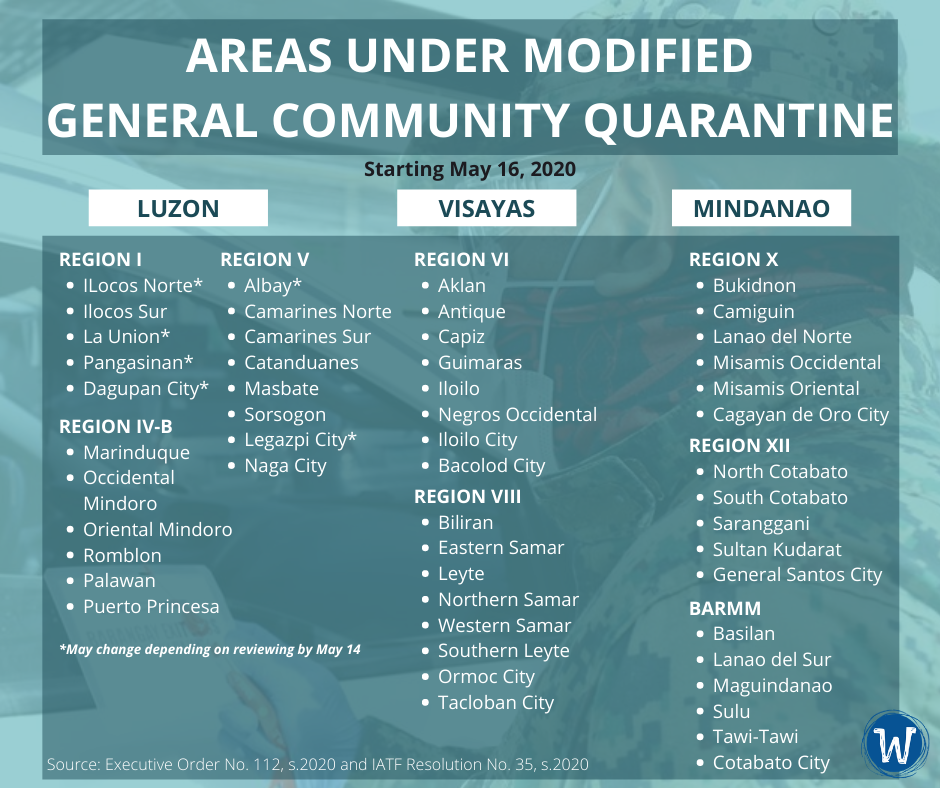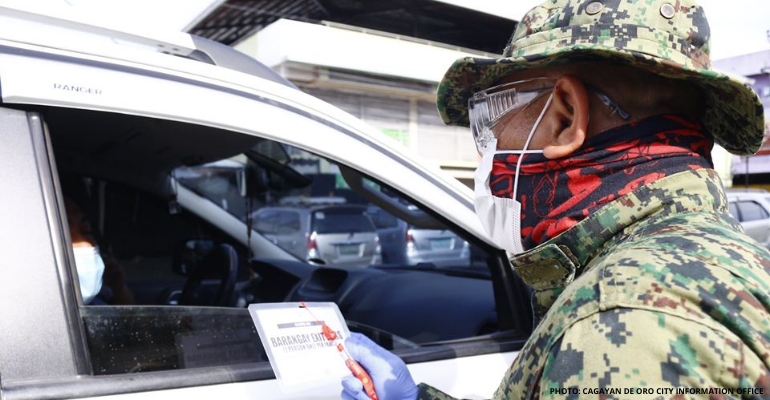You Might Also Want To Read: Malacañang recalls lifting of quarantine measures, imposes modified GCQ in 8 low-risk areas
He also introduced the term Modified General Community Quarantine, which will be imposed in low-risk provinces and cities. Regardless of the now allowed movements in some areas, the government continues to urge citizens to stay at home as much as possible and to strictly follow health guidelines such as mask-wearing, physical distancing, and frequent handwashing. To know more, watch the May 13, 2020 press briefing below:Movements
Movements are now allowed, depending on what quarantine classification your area belongs to. In areas under Modified ECQ:
In areas under Modified ECQ:
- Strict stay-at-home measures continue, however, people will be allowed to leave their homes ONLY to obtain essential goods and services;
- Work in industries is allowed to resume;
- Exercising outdoors, like jogging and biking, are now allowed if people wear masks and stay two meters apart.
Business operations
Some businesses can now ease back to their operations under Modified ECQ, including:- Essential industries like health care, pharmacies, veterinary clinics, food manufacturing, and supply chains, and groceries can operate at full capacity;
- Some manufacturing and processing plants, which can operate at only 50% capacity;
- More commercial establishments can also operate at 50% capacity.
Transporation
Modified ECQ- Private shuttles will be allowed but only for essential work and services;
- No public transportation like trains, buses, jeeps, taxis, or transport network vehicle services (like Grab);
- Private cars are allowed, as long as only two people sit per row;
- Motorcycles, bicycles, and e-scooters allowed with only one rider.
- Public transportation now allowed but with the enforcement of health protocols.
- Private vehicles, motorcycles, bicycles, allowed.
Flights
Modified ECQ- No domestic flights, no inter-island travel;
- Limited international flights;
- Filipinos from abroad will be allowed to fly home.
Government Offices
Modified ECQ: Skeletal workforce in office premises while the rest work from home. GCQ: Alternative work arrangements such as a 4-day workweek. Modified GCQ: Operations resume but with health protocols.Classes
Modified ECQ: Physical classes can’t resume yet. GCQ: School premises can open to allow the skeletal workforce to process requirements from students and prepare for next semester or graduation. Modified GCQ: Normal physical classes may resume with health protocols enforced.Mass gatherings
Modified ECQ: Only gatherings of up to 5 people are allowed, with health protocols observed. GCQ: Gatherings of up to 10 people are allowed, with health protocols observed. Modified GCQ: No information yet. Furthermore, the government introduced the zoning scheme that will be implemented by local government chiefs in Metro Manila, Laguna, and Cebu City. In this scheme, barangays with COVID-19 cases will still be under the original ECQ. Those with 20 or more cases are considered “critical zones” and will be under ECQ or hard lockdown.
Meanwhile, those with fewer cases are considered “containment zones” and will be under modified ECQ.
Barangays or clusters of barangays adjacent to any area with COVID-19 cases are “buffer zones” where GCQ will be enforced. Barangays outside a buffer zone will be on modified GCQ.
Those with 20 or more cases are considered “critical zones” and will be under ECQ or hard lockdown.
Meanwhile, those with fewer cases are considered “containment zones” and will be under modified ECQ.
Barangays or clusters of barangays adjacent to any area with COVID-19 cases are “buffer zones” where GCQ will be enforced. Barangays outside a buffer zone will be on modified GCQ.
Click here to see LIST: Areas under Modified ECQ, GCQ

Here’s the full list of Roque’s May 13 presentation—presented by Rappler:
—(Source: Rappler)
Leave a Reply